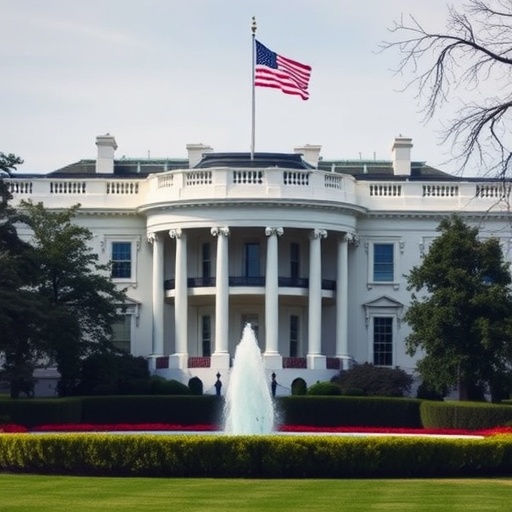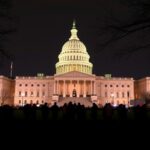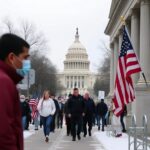White House Confirms Mass Federal Workforce Layoffs as Government Shutdown Enters Critical Phase
In a stark announcement that has sent shockwaves through Washington and beyond, the White House has officially confirmed the initiation of substantial layoffs across the federal workforce. The Office of Management and Budget (OMB) revealed that these measures are a direct consequence of the protracted government shutdown, now stretching into its third week, forcing unprecedented budget cuts to sustain essential operations. With over 800,000 non-essential federal employees already furloughed, the latest developments signal a painful escalation, as permanent job losses begin to materialize for thousands more.
The disclosure came late Friday afternoon via an OMB memorandum, which outlined the necessity of these layoffs to address a funding shortfall estimated at $5.2 billion for the fiscal year. “These are not decisions taken lightly,” OMB Director Shalanda Young stated in the memo. “The ongoing government shutdown has depleted resources, compelling us to make tough choices to prioritize national security and core services.” This move marks the most severe workforce reduction in decades, evoking memories of the 2013 shutdown but on a far larger scale.
As families brace for uncertainty and lawmakers point fingers, the White House faces mounting pressure to resolve the impasse over spending bills. The shutdown, triggered by disputes over border security funding and debt ceiling hikes, has already cost the economy an estimated $1.5 billion per week in lost productivity, according to the Congressional Budget Office (CBO). Now, with layoffs underway, the human toll is becoming all too real.
OMB Outlines Scale of Federal Layoffs and Budget Constraints
The OMB’s detailed breakdown paints a grim picture of the budget cuts driving these layoffs. In the memorandum, officials specified that approximately 150,000 positions across various agencies could be affected in the initial wave, with potential for more if the government shutdown persists. Key departments like the Department of Housing and Urban Development (HUD) and the Environmental Protection Agency (EPA) are slated for the deepest reductions, losing up to 20% of their staff to align with emergency funding levels.
“We’ve been operating on a shoestring budget since the shutdown began,” explained a senior OMB official during a briefing with reporters. “Non-essential functions must be curtailed, and that means letting go of dedicated public servants who have served this nation faithfully.” Statistics from the memo highlight the urgency: Federal spending has dropped by 25% in non-defense discretionary areas, forcing agencies to dip into reserves that are now critically low.
To illustrate the breadth of impact, consider the following key figures released by the OMB:
- Department of Veterans Affairs (VA): 10,000 positions at risk, primarily in administrative roles, though medical services remain funded.
- Department of Education: 15,000 layoffs targeted, halting grant processing and student aid disbursements.
- National Park Service: An additional 5,000 seasonal and support staff to be cut, following initial furloughs.
These budget cuts are not arbitrary; they stem from the lack of appropriated funds, a situation exacerbated by partisan gridlock in Congress. The White House has repeatedly urged bipartisan action, but negotiations have stalled over ideological differences.
Federal Employees Face Immediate Hardships from Shutdown Layoffs
For the federal workforce, the reality of these layoffs is hitting hard and fast. Many employees, already without paychecks for weeks, now confront the prospect of permanent unemployment. In interviews with affected workers, stories of financial strain and emotional distress abound. “I’ve worked for the government for 22 years, and this is how it ends? Because politicians can’t agree?” lamented Sarah Thompson, a 48-year-old analyst at the General Services Administration (GSA), who received her layoff notice on Monday.
Unemployment claims from federal workers have surged by 300% since the shutdown started, per Labor Department data. Support networks, including the National Treasury Employees Union (NTEU), have reported a 40% increase in calls to their assistance hotlines. “Our members are dipping into savings, maxing out credit cards, and some are even facing foreclosure,” said NTEU President Dorothy James in a statement. “The White House and Congress must end this government shutdown now to prevent further devastation.”
Beyond individual plights, the layoffs are disrupting daily operations. At the Food and Drug Administration (FDA), for instance, routine inspections have been postponed, raising concerns about food safety. Similarly, the Internal Revenue Service (IRS) warns of delays in tax processing once funding resumes, potentially affecting millions of Americans’ refunds.
Demographic data underscores the vulnerability: Over 60% of those facing layoffs are mid-career professionals aged 35-55, many with families dependent on stable government salaries averaging $95,000 annually. Women and minorities, who make up 45% and 30% of the federal workforce respectively, are disproportionately represented in the affected roles, according to a recent Government Accountability Office (GAO) report.
Political Storm Brews Over White House Shutdown Strategy
The White House‘s confirmation of mass layoffs has ignited a firestorm of political recriminations. Democrats in Congress have accused the administration of using the government shutdown as leverage to push a conservative agenda, including stringent budget cuts to social programs. “This is economic terrorism against American workers,” charged House Speaker Nancy Pelosi in a fiery floor speech. “The White House is willing to sacrifice the federal workforce on the altar of ideology.”
Republicans, however, counter that the impasse is due to Democratic obstructionism on immigration reform. Senate Majority Leader Chuck Schumer called for an immediate vote on a clean continuing resolution, but GOP leaders blocked it, citing the need for spending reforms. President Biden, in remarks from the Rose Garden, defended the layoffs as unavoidable. “I’m fighting for the American people, but we can’t spend what we don’t have,” he said. “These budget cuts are painful, but necessary to avoid a deeper crisis.”
Lobbying groups are mobilizing as well. The Partnership for Public Service, a nonpartisan advocate, has launched a campaign urging swift resolution, estimating that prolonged layoffs could lead to a brain drain in government expertise. “Losing seasoned professionals now means rebuilding costs in the millions later,” warned their executive director, Max Stier.
Public opinion polls reflect the divide: A recent Gallup survey shows 55% of Americans blame congressional Republicans for the shutdown, while 40% point to the White House. Bipartisan frustration is evident, with approval ratings for both parties dipping below 30% on handling the crisis.
Economic Ripples from Federal Layoffs Extend Nationwide
The layoffs in the federal workforce are not confined to Washington; their economic fallout is rippling across the country. Regions with high concentrations of government jobs, such as Northern Virginia and Maryland, are bracing for recessionary pressures. Real estate experts predict a 15% drop in housing starts in these areas due to job insecurity, while local businesses report a 20% decline in sales from furloughed workers.
The CBO projects that if the government shutdown extends another month, GDP growth could shave off 0.5 percentage points for the quarter, with layoffs contributing to a loss of $18 billion in wages. Small businesses dependent on federal contracts, numbering over 300,000, face cascading budget cuts, potentially leading to 50,000 private-sector job losses.
In-depth analysis from economists at the Brookings Institution highlights long-term risks: “The federal workforce reductions could stifle innovation in key sectors like renewable energy and public health,” noted senior fellow Isabel Sawhill. Supply chain disruptions are already evident; for example, delayed USDA inspections have slowed agricultural exports, costing farmers $200 million weekly.
Consumer confidence indices have plummeted to their lowest since the pandemic, with fears of broader budget cuts fueling market volatility. The Dow Jones fell 2.3% following the OMB announcement, wiping out $500 billion in market value overnight.
Path Forward: Resuming Talks and Mitigating Layoff Damage
As the government shutdown grinds on, glimmers of hope emerge from backchannel negotiations. House Minority Leader Kevin McCarthy indicated willingness for compromise, suggesting a short-term funding bill tied to modest budget cuts. The White House has signaled openness, with Chief of Staff Ron Klain scheduling talks with Senate leaders for early next week.
In the interim, mitigation efforts are ramping up. The Small Business Administration (SBA) has fast-tracked low-interest loans for affected workers, while states like California and New York are offering emergency unemployment extensions. Philanthropic organizations, including the United Way, have raised $10 million for hardship funds targeted at the federal workforce.
Looking ahead, experts warn that reinstating laid-off employees could take months, even post-resolution. The GAO recommends a phased rehiring plan to minimize disruptions, estimating costs at $1.2 billion. For the nation, the priority is clear: Ending the shutdown swiftly to avert irreversible damage to public services and economic stability. As one OMB spokesperson put it, “This crisis tests our resolve—failure is not an option.” With stakes this high, all eyes remain on Capitol Hill for the breakthrough that could halt the layoffs and restore normalcy.









